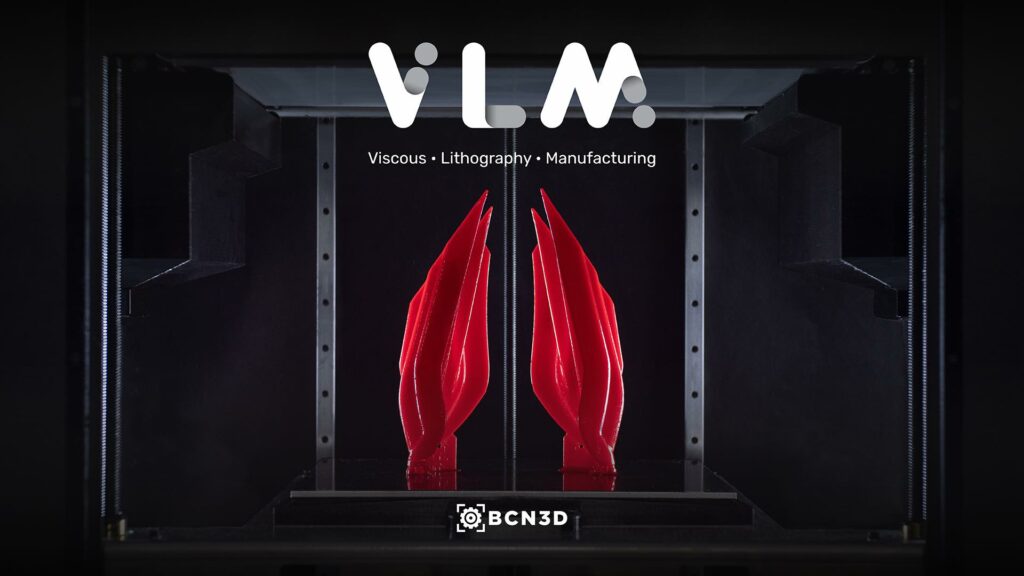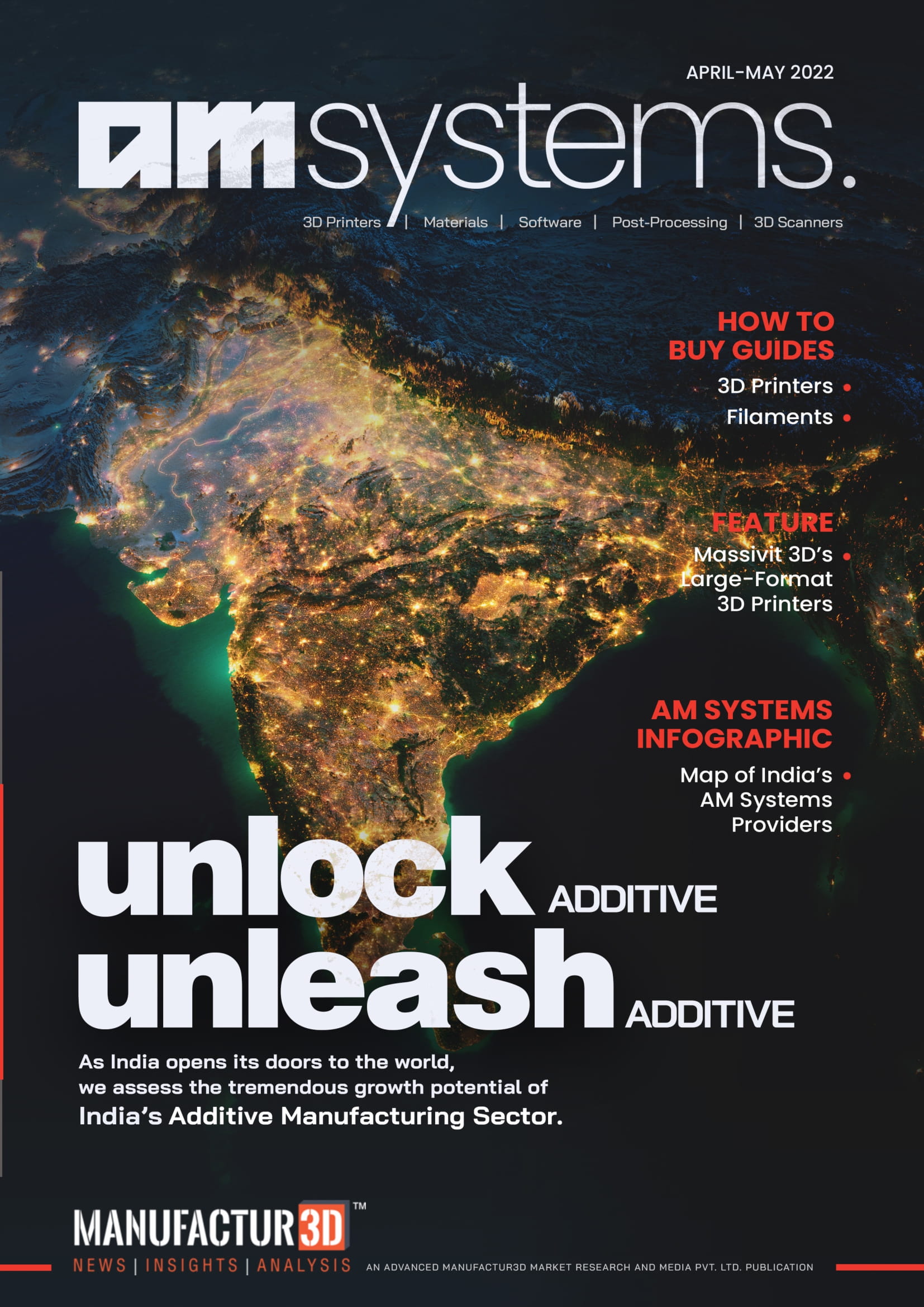After three years of dedicated research, the R&D team of BCN3D Technologies, one of the leading developers and manufacturers of 3D printing solutions, developed and launched an altogether new technology – the Viscous Lithography Manufacturing or VLM 3D Printing Technology.
The CEO of BCN3D, Xavier M. Faneca, revealed that the company has been developing the new technology for the past three years. Working towards achieving its vision to unlock manufacturing autonomy, where companies should have the tools to design and manufacture their own products and full control over the Additive Manufacturing (AM) fabrication life-cycle, BCN3D’s treaded the path to developing the VLM 3D printing technology.
But what exactly is this new Viscous Lithography Manufacturing technology and how does it fare against the established technologies. Continue reading to know more.
Viscous Lithography Manufacturing or VLM 3D Printing Technology
The Viscous Lithography Manufacturing falls under the Vat Photopolymerization type of 3D printing technology as defined by ASTM and a variant of the popular DLP technology. The technology was specifically developed to eliminate drawbacks of other resin-based technologies.
While most resin technologies use a vat of resin material, VLM uses a laminated film to build objects. It is a unique approach to resin 3D printing and so continue reading to know more.
1. VLM 3D Printing Technology Components

Resin Reservoir: The VLM technology has two resin tanks sitting on either side of the print bed. Both reservoirs can be used for same resins to increase the speed of the production or one can be loaded with support material.
Laminated Resin: The resin from the resin tank is accurately picked up by a roller and laminated to the underside of a transparent film which is further transferred to the printing area.
Roller: The rollers on both sides of the resin reservoir are used to roll the resin into a laminate and also used to transfer the resin in and out of the printing area.
UV Light Engine: The UV light engine sits on top of the module and flashes the image. This light cures the resin only in the specified area to form the layer of the object to be printed.
Print Bed: The print bed performs its usual movement in the Z-direction
2. VLM Technology Process

The VLM 3D printing process is simple to understand. While most resin-based 3D printing technologies use tank or vat of resin, the VLM simply uses a film.
At first, a transparent film is passed through the resin reservoir with the help of a roller. The resin sticks to the underside of this transparent film. This film is then transferred further to the printing area. The thickness of the resin on the film represents the layer height.
The film is held under tension from both side through the rollers so that the film is perfectly flat.
The print bed then moves upwards to come in contact with the film. Once the bed and resin come in contact, the UV light engine activates and flashes the image to be 3D printed onto the film from the upper side. This selective exposure of the resin to the UV light cures specific area of the resin forming a layer of the object.
As the first layer is formed, the print bed moves downward causing the cured layer to peel away from the film. The unused resin is recovered and recirculated into the reservoir to be used again for subsequent layers.
This process is repeated till the entire object is printed.
3. Benefits of VLM 3D Printing Technology

- The most significant benefit of the VLM 3D printing technology is its ability to process resins 50 times more viscous than competing technologies like SLA, DLP and others..
- The high viscosity means a wider range of materials can be developed and used with this technology which deliver better thermal and mechanical properties.
- VLM processes resins that obtain 3x the amount of impact resistance for rigid materials and a 200% increment in tear strength compared to industry-standard formulations.
- BCN3D has also partnered with Arkema which means that both these companies will be focusing on developing a broad range of high-quality thermosetting resins compatible to the technology.
- VLM has two resin reservoirs which can be effectively used for three purposes based on the users requirements:
- Faster Printing: By loading both the reservoirs with the same material, the printing can be performed faster thus reducing printing time.
- Support Material: By filling up one tank with a support material, complex models can be printed thus enabling wider range of applications.
- Multi-Material Printing: By filling both the reservoirs with different printing resins, a multi-material printing can be achieved. This again gives a huge advantage over the existing technologies like SLA, DLP and even DLS.
Conclusion
The technology has just launched and it is too early to asses its impact on the market. Like with every new 3D printing technology, the materials also have to develop along with the tech. So, unless BCN3D reveals the range of materials compatible with the new VLM 3D printing technology will not be adopted by the industry.
We will have to wait and watch and see how the ecosystem of this technology grows and till then we will keep a close watch on the technology and keep you updated.
VLM™ is a registered Trademark of BCN3D Technologies.
About Manufactur3D Magazine: Manufactur3D is an online magazine on 3D printing. which publishes the latest 3D printing news, insights and analysis from all around the world. Visit our 3D Printing Education page to read more such informative articles. To stay up-to-date about the latest happenings in the 3D printing world, like us on Facebook or follow us on LinkedIn and Twitter.



